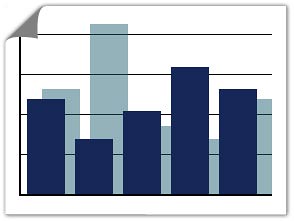 Metro has posted a “News Q & A: June 22 Red Line Collision” in an effort to communicate better about the events of a week ago.
Metro has posted a “News Q & A: June 22 Red Line Collision” in an effort to communicate better about the events of a week ago.Probably one key question we all want to know is “Are Metro’s 1000-series rail cars safe?”
To this, Metro says: “All of Metro's 1,126 Metrorail cars are safe, including the 1000-series rail cars. Metro is subject to oversight from the Tri-State Oversight Committee (TOC).”
Period.
That also appears to be the answer to a question we posed last week regarding oversight of WMATA.
But wait a minute.
In the aftermath of the accident, ABC 7 found that the TOC has "no office and it's not clear who is a member."
According to this excellent and scary Washington Post article from 2005, the TOC “has no regulatory authority.”
“The agency (WMATA) is able to leave safety issues unaddressed without fear of formal sanction because no state, regional or federal regulators have direct power over it.”
Furthermore, the article states, “Internally, Metro's safety department investigates accidents and develops policy recommendations to reduce risks. But it cannot require other departments to abide by its recommendations. The agency also lacks accountability, records show; it rarely fires people who commit serious violations.”
After Monday’s crash, Del. Eleanor Holmes Norton (D-D.C.), held an online chat with the Washington Post, during which she said “There is a regional board called the Tri-State Safety Board. I have not heard of their interventions, but we are in the process of looking at what, if any, regulatory features are part of this system.”
If you Google "Tri-State Safey Board," that Post article is the only result, so she's probably refering to the TOC.
Metro’s odd position in a netherworld of criss crossing, often feuding jurisdictions not only impedes funding, it makes it unaccountable to anyone for such basics like safety.
Instead of pretending there's someone looking over its shoulder, Metro should be screaming for meaningful oversight. It would bolster incredibly the agency's bargaining position regarding funding, but it might shed light on some things WMATA would rather keep in the dark.
If a regulatory agency with teeth had told Metro "either get rid of those 1000-series cars or make them safer by 20XX," Metro would have been able to go to the jurisdictions and say "look, if we don't get money to replace or improve these cars, we're going to have to significantly cut back service. Our hands are tied."
One could easily imagine that under that scenario, the jurisdictions would fall over themselves to fund replacements given the "credible risk of the Federal workforce being stuck in the burbs," as one reader put it.
Stop pretending you have oversight, Metro. We'd all be better off if you played this one straight.
Of interest:
A cheaper route to Metro core capacity? (GGW)









 Oct. 11, 2012
Oct. 11, 2012 February 21, 2012
February 21, 2012 March 4, 2010
March 4, 2010





4 comments:
Is "Tri-State" a misnomer? DC isn't a state.
Wonder why Metro has no strong oversight? Break out your copy of the Constitution and I’ll explain.
First, start by checking out an obscure federal document called 49 Code of Federal Regulations, Part 659. Entitled “Rail Fixed Guideway Systems; State Safety Oversight,” it’s not exactly a page turner, but in essence, it requires any state with a rail transit system (like Metro) that takes Federal Transit Administration grant dollars, to have their safety and security overseen by a state agency. Here’s a link: http://transit-safety.volpe.dot.gov/publications/sso/49CFRPart659_FinalRule/49CFR659_Reference_Guide.pdf
FTA doesn’t give those state safety oversight agencies, called SSOs, any money to perform this crucial task. Nor does it give them any real regulatory authority. The worst an SSO can do, under federal law, is withhold a small percentage of the millions (sometimes billions) that a transit agency is getting from the FTA. Some states give their SSOs additional regulatory authority, like California, but that’s rare.
But the FAA stringently regulates aviation, and the FRA does the same for the railroad industry (think Amtrak and freight trains.) So why can’t FTA do it for transit? This is where you pick up your copy of the Constitution. Since Amtrak and the airlines are engaging in interstate commerce, the Constitution grants the federal government broad power to regulate that commerce, including passing strict safety regulations. Interstate truckers carrying frozen food have to abide by more federal safety regulations than a Metro train operator who’s got the lives of 2,000 people in his hands.
But since very few rail transit agencies actually cross state lines (just DC and St. Louis) FTA is incorporated under the “general welfare” clause of the Constitution. That gives them the authority to disburse grant money, used to build subway and bus systems, but despite trying, FTA lacks any authority to regulate transit operations. That means no rules about a train’s ability to withstand a collision, or (take a look at the Woodley Park 2004 NTSB report) no authority to prevent train operators from working long hours.
NTSB tried to get FTA to tie grant funding to safety standards by recommending that FTA mandate “black boxes” be installed on all trains bought with federal money. Sounds reasonable, but even that didn’t pass a Constitutional smell-test.
With no authority of their own, FTA hoped (under 49 CFR Part 659) that states would pick up the slack. So…where’s the federal oversight? Held back by the Constitution. If you want strict FAA-style regulation on the Metro, call your Congressman or your Senator. Let them know you want a Constitutional amendment, and hopefully you won’t get laughed off the phone.
Great comment. Thanks.
Well done. Great post.
Post a Comment